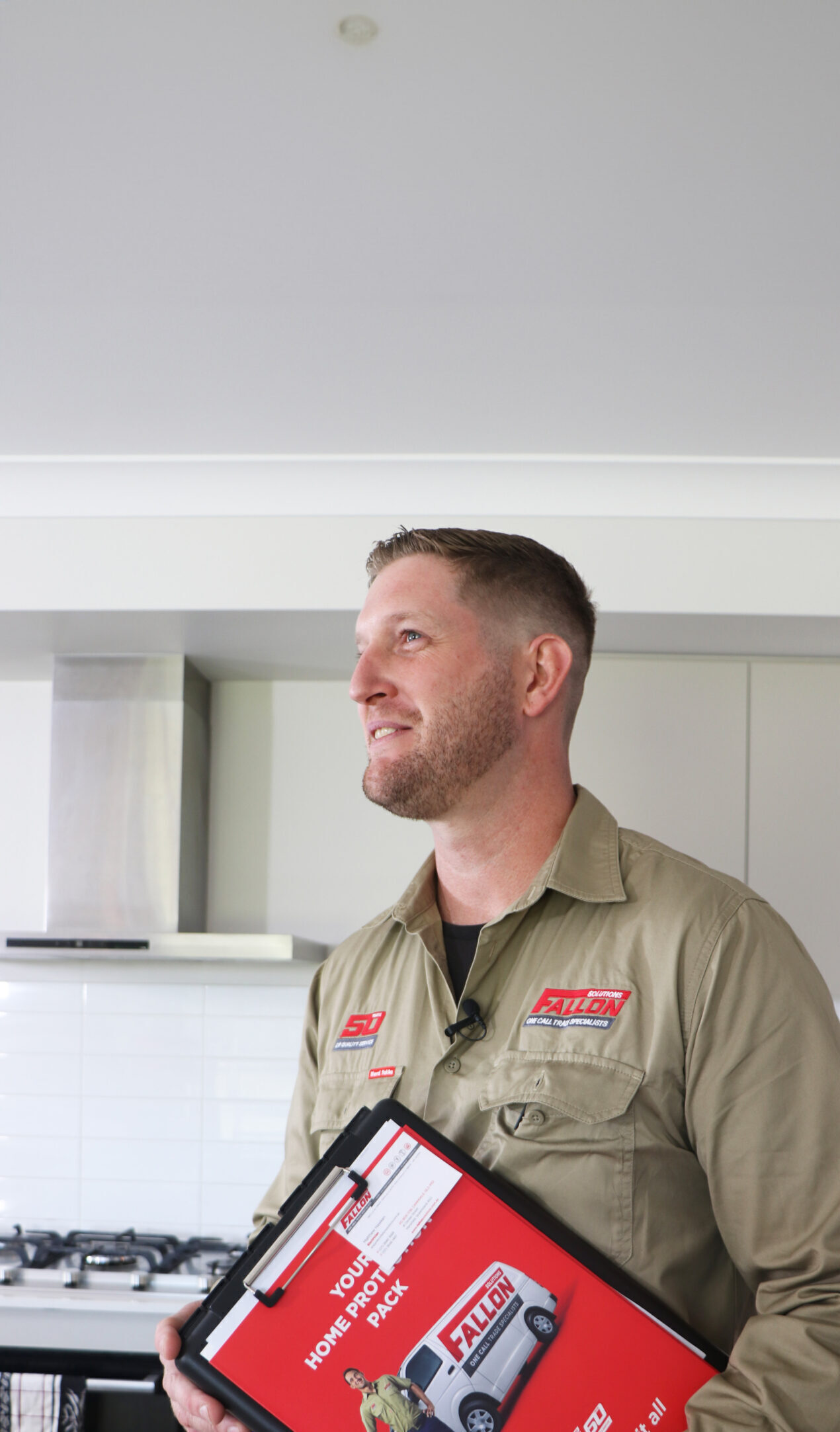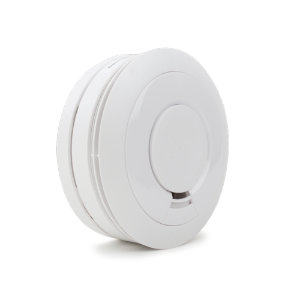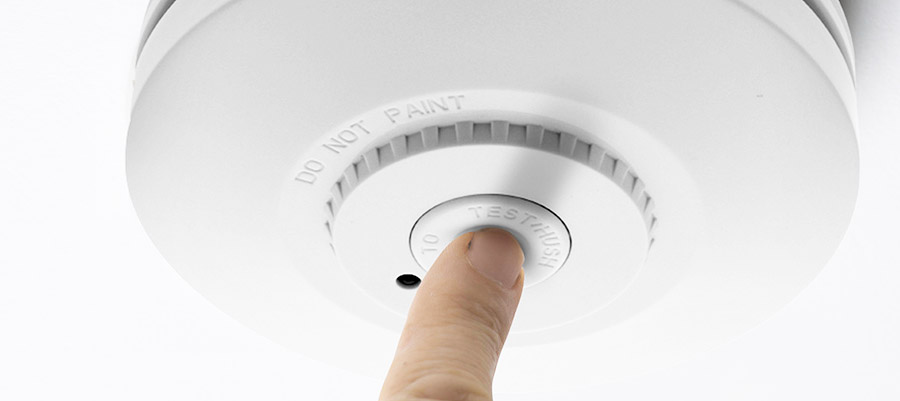Commonly asked smoke alarm questions
Every day on the job our smoke alarm technicians are asked lots of questions by residents about the rules and regulations around smoke alarm installation and maintenance in Queensland. Our electricians have put together this list of answers to commonly asked questions to help ensure your family and home are protected in the event of a fire.
Do you need to be an electrician to install smoke alarms?
Hardwired smoke alarms, sometimes called mains connected or 240-volt must be installed and repaired by a licenced electrician. Non-removable 10-year lithium battery and 9-volt battery-powered smoke alarms can be installed by residents.
Can you install a smoke detector yourself?
Smoke alarms which are not hardwired such as battery-powered type alarms, both 9-volt battery and 10-year lithium battery-powered, can be installed by you.

Need professional electrical services from a local Master Electrician?
We Can Be There Today!
Call 1300 054 488 or
Book Online
For all your electrical and plumbing needs, call us on 1300 054 488.
When do new Qld smoke alarm laws start?
The new Queensland Smoke Alarm Legislation is being phased in over 10 years starting from 1 January 2017 so the date it applies to your home will depend on your situation.
For existing dwellings
From 1 Jan 2017
- When replacing smoke alarms compliant photoelectric type must be used.
From 1 Jan 2027
- Smoke alarms must be photoelectric, not contain an ionisation sensor, be less than 10 years old, operate when tested, and be interconnected with every other smoke alarm.
- Alarms must be either hardwired or 10-year non-removable battery powered.
- Smoke alarms must be installed on each storey, in each bedroom, and in hallways connecting bedrooms and the rest of the house. If no hallway, then between the bedroom and the rest of the house. If there are no bedrooms on a storey at least one smoke alarm must be installed in the most likely path of travel to exit the house.
For homes being sold or leased
This applies to renewing existing leases as well.
From 1 Jan 2017
- When replacing smoke alarms compliant photoelectric type must be used.
- Property sellers must lodge a Form 24 stating smoke alarm requirements have been met under the revised legislation.
From 1 Jan 2022
- Smoke alarms must be photoelectric, not contain an ionisation sensor, be less than 10 years old, operate when tested, be interconnected with every other smoke alarm.
- Alarms must be either hardwired or 10-year non-removable battery powered.
- Smoke alarms must be installed on each storey, in each bedroom, in hallways connecting bedrooms and the rest of the house. If no hallway, then between the bedroom and the rest of the house. If there are no bedrooms on a storey at least one smoke alarm must be installed in the most likely path of travel to exit the house.
For new homes and homes which are substantially renovated
From 1 Jan 2017
- The development approval process for building or renovating will ensure homes are compliant.
- Smoke alarms must be photoelectric, not contain an ionisation sensor, be interconnected with every other smoke alarm.
- Alarms must be hardwired with a backup power supply (battery).
- Smoke alarms must be installed on each storey, in each bedroom, in hallways connecting bedrooms and the rest of the house. If no hallway, then between the bedroom and the rest of the house. If there are no bedrooms on a storey at least one smoke alarm must be installed in the most likely path of travel to exit the house.

If I am selling my house, what are the new smoke alarm rules?
When replacing existing smoke alarms, either hardwired or battery-powered, a compliant photoelectric smoke alarm must be used. As part of the sales process, property owners will be required to lodge a Form 24 to the QLD Land Registry Office stating the relevant smoke alarm legislation has been met.
If you sell your home after 1 January 2022 your smoke alarm system will need to adhere to the following requirements.
- Smoke alarms must be photoelectric, not contain an ionisation sensor, be less than 10 years old, operate when tested, be interconnected with every other smoke alarm.
- Alarms must be either hardwired or 10-year non-removable battery powered.
- Smoke alarms must be installed on each storey, in each bedroom, in hallways connecting bedrooms and the rest of the house. If no hallway then between the bedroom and the rest of the house. If there are no bedrooms on a storey at least one smoke alarm must be installed in the most likely path of travel to exit the house.
How do I find out if my smoke alarm is in date or out of date?
Smoke alarms are fitted with a manufacture date stamp or sticker. Any alarm older than 10 years must be replaced with a photoelectric type smoke alarm. After 10 years smoke alarms are prone to malfunction and can become less efficient due to a buildup of dust and insects or the corrosion of electrical circuitry.
If I burn toast or food how do I silence my smoke alarm?
If you live in a house or duplex
Some smoke alarms are fitted with a ‘Hush’ button which can be pressed to silence the alarm. However, if yours does not have this function waving a tea towel or cloth around the alarm to disburse the smoke as well as opening windows and doors will allow the smoke to dissipate and stop the alarm from sounding.
If you live in an apartment complex
Multi-storey residential buildings are usually fitted with whole building fire protection systems which means when the alarm is triggered in your apartment the whole floor or building siren is activated. The alarm will need to be disabled by your building manager or Fire Safety Adviser.
How many smoke alarms can be interconnected?
Up to 12 smoke alarms in a hardwired interconnection system can be connected together. Up to 40 smoke alarms (model dependent) in wireless interconnection systems can be grouped together. However, speak to your smoke alarm technician for specific advice for your home and the type of smoke detectors used.
How long do smoke alarms last these days?
Smoke alarms are designed to be effective for 10 years. After this time they can be affected by dust and dead insect build-up, or corrosion, and become less effective.
Can you buy smoke alarms with no light or with less light?
There is a huge range of smoke alarms on the market many of which are designed without a battery light or active light. Speak to your electrician about installing smoke alarms without a light.
Do I need to be an electrician to unplug a mains-powered smoke alarm?
Yes. Any work carried out on the electrical systems of your home, including your smoke alarms, must be completed by a licenced electrician.
Can smoke alarms fail or not detect smoke?
It is possible for smoke alarms to fail to activate in a fire which is why regular testing and cleaning is essential. Failure to react to smoke can be due to many reasons including:
- flat battery,
- dust or insects in the alarm
- corrosion
- faulty installation
- being over 10 years old (expired)
Also, different styles of smoke alarms react to different types of fire. If the fire is mainly smouldering photoelectric smoke alarms will detect it very quickly. However, ionisation smoke alarms are better at activating in fast flaming fires. The type of fire can be a factor in whether the alarm activates or not.
What is the difference between ionisation and photoelectric smoke alarms?
Ionisation and photoelectric smoke alarms have both provided a life-saving early warning system for homes across the country. They both detect fire however go about it slightly differently.
Ionisation smoke alarms
Ionisation smoke alarms contain a small amount of radioactive material fitted between two electrodes. A current flows from the battery through the electrodes creating a circuit. When smoke enters the alarm and passes between the electrodes the circuit is disrupted. This disruption triggers the alarm activation.
Ionisation alarms are good at detecting fast flaming fires.
Photoelectric smoke alarms
Photoelectric smoke alarms detect smouldering fires quickly by using an LED light in a small sensing chamber. The light is angled away from the sensor however when smoke enters the chamber it reflects the light back onto the sensor, setting off the alarm.
Comparing both styles of smoke alarms during studies has found that photoelectric alarms respond much faster to smoky, smouldering fires, the most common type in homes. In as little as 3 to 5 minutes photoelectric smoke alarms had detected and sent an alarm to warn residents. Ionisation alarms can be slower to react to this type of fire, sometimes taking up to 20 minutes to activate.
In QLD which type of smoke alarm is recommended?
Queensland Fire and Emergency Services recommend using photoelectric smoke alarms due to their faster response times, fewer nuisance alarms from cooking, and effectiveness in detecting smouldering fires with dense smoke.
The new smoke alarm legislation also states that any smoke alarms which are faulty or out of date must be replaced with a photoelectric type alarm.
What kind of smoke alarm is installed for the deaf or hearing impaired?
Smoke alarms which are designed with visual warnings using strobe lights, rather than audio, are ideal for installation in homes of deaf or hearing impaired residents. These smoke alarms can be paired with vibration pads which are positioned under the pillow or mattress to alert residents from sleep.
Do smoke alarms have to be connected to the security system?
No smoke alarms can be a stand-alone operation, however, a connection is an option for homes with security systems. There are a range of smoke alarms which can be connected to your home security system which provide notification via your monitoring system if a fire occurs when you are out of the house.
Brands such as Brooks, Bosch and Ness provide security system smoke alarm integration systems.
References –
https://www.cfa.vic.gov.au/plan-prepare/installation-and-replacement ,

